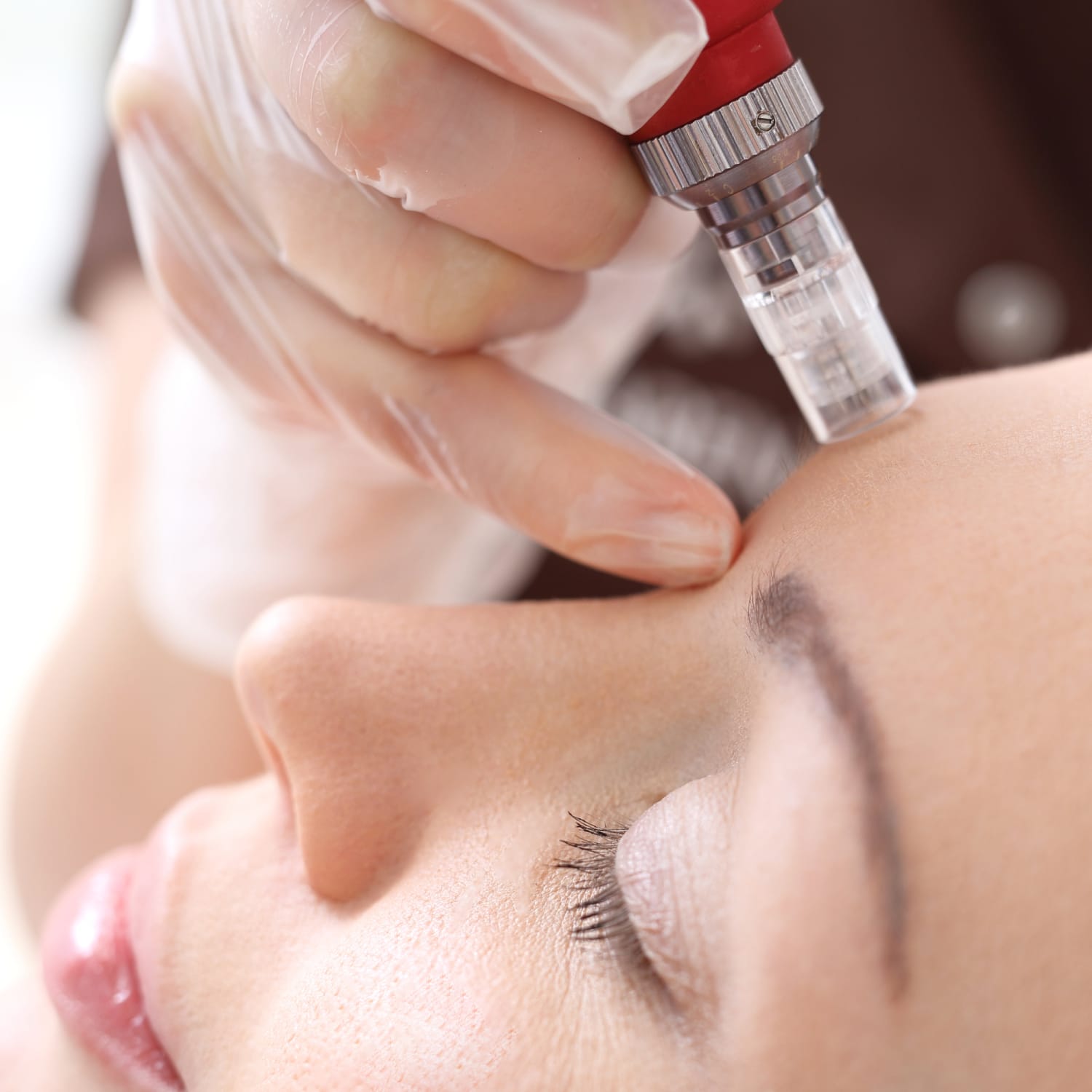What Is Microneedling?
During micro needling (collagen induction therapy, skin needling, or derma rolling), your dermatologist will smooth a numbing cream over your face before making small pricks with a pen-shaped tool with tiny needles. The process encourages your body to create new tissue that is more even in texture and tone.
One unexpected benefit of the treatment is that it helps eliminate blackheads. For more information, just click the Visit Website to proceed
Microneedling is a skin-smoothing treatment that can help reduce the appearance of acne scars, fine lines and wrinkles, large pores, dark spots, and uneven pigmentation. It creates minuscule “injuries” in the skin, triggering a natural healing process that results in your body producing more collagen and elastin. This results in smoother, firmer, more taut skin.
To perform the procedure, your dermatologist will put on some numbing cream and then use a pen-shaped or rolling tool with tiny needles to make marks on your face. The needles may cause some bleeding, but it’s nothing to worry about — it’s part of the process. The numbing cream should wear off in about 20 minutes during the procedure.
According to studies, once the doctor makes those small wounds, your body responds by sending collagen to the area to patch them up. This helps plump and smooth out fine lines and wrinkles, as well as firm up sagging areas of the skin.
It also boosts your elastin production, tightening the skin to give you a youthful glow. It also shrinks pores and breaks up dark spots or hyperpigmentation, sometimes caused by hormones or other conditions.
One big benefit of microneedling is that it can prevent acne breakouts because it decreases sebum production and helps your skin get rid of blackheads. In addition, it can also reduce the appearance of current pimples by reducing inflammation and redness and regrowing damaged skin.
If you have a sensitive complexion, it’s a good idea to get your treatments done in a medical facility where doctors are trained to monitor your condition and ensure the tools are clean and hygienic. In addition, you’ll want to avoid squeezing or picking at the tiny pricks.
The only real drawback is that it takes a while for your skin to recover after the treatment so that you might be stuck with a red face for a few days. You should also stay out of the sun and use high-SPF sunscreen when you’re out in public.
The tiny wounds created by the needles in your skin signal to your body that something needs to be repaired. As your body responds, it re-energizes collagen and elastin production, making fine lines and wrinkles less visible. The process also promotes new tissue growth, making your skin plumper and more firm.
Microneedling can also help to reduce the appearance of acne scars. However, it is not as effective for keloid scars or other large lacerations and may not be appropriate for all types of acne. Talking to a dermatologist before using microneedling to treat your acne scarring or other skin concerns is best.
Another benefit of microneedling is that it can be used to remove enlarged pores. Having larger pores can make your skin look dull and lifeless, which is the opposite of how you want to be perceived. The treatment can be done with a chemical peel for more impressive results.
You can also use the procedure to address hyperpigmentation. This is a common issue that many people deal with. The needles can reduce the appearance of brown spots and other areas of darker skin, giving your complexion a more even tone.
It can also help to reduce enlarged pores, which is an issue that many people deal with. The needles on the derma roller can be used to make the pores smaller, making your face and neck more even.
It can also improve the appearance of stretch marks, other scars, and skin discolorations. It is a good option for patients with sensitive skin because it doesn’t cause pain or discomfort. The numbing cream used during the treatment helps to prevent any discomfort that may occur. However, it is important to note that the procedure should only be performed by a professional esthetician or dermatologist trained in the process. The derma rollers cleared by the FDA to perform this type of treatment can reach nerves and blood vessels, so they should only be used by licensed medical professionals.
During the procedure, your dermatologist will either use an electric device or a roller with tiny needles. The needles poke your skin to make micro wounds. This encourages your body to create new tissue that is smoother and more even in tone and texture. It also stimulates the production of collagen, which helps firm and tighten your skin. This makes it an effective treatment for reducing fine lines and wrinkles and loosening sagging skin.
Unlike other treatments, the microneedling process does not damage the outer layer of the skin. It also isn’t very painful. However, it isn’t a quick fix. It takes time for your skin to heal. Many patients require multiple sessions to see the results they want.
The only significant side effect of microneedling is that your skin may look red after the procedure. It might feel like you have a sunburn, but the redness typically fades within a few days to a week. You also might experience some bruising. Call your dermatologist if the bruising doesn’t go away or becomes excessive.
Although the microneedling technique is safe for almost all skin types and ethnicities, it’s important to talk to your dermatologist before you undergo treatment. This is especially true if you have certain medical conditions or take medications that affect blood clotting. You should also avoid this treatment if you have active acne or are undergoing chemotherapy or radiation therapy for cancer.
While it’s not fully understood how this treatment works, microneedling seems to help reduce and treat acne. This may be because it reduces sebum production, which leads to less oily skin and fewer breakouts. It also might work by triggering the growth of new skin cells free of clogged pores.
Another cool side effect of the procedure is that it can help eliminate blackheads. While the exact reason for this isn’t clear, it’s likely because the controlled trauma of the thousands of needle pokes liberates and dislodges these clogged pockets. Regardless of how it works, this is an effective treatment for eliminating unwanted blackheads.
Microneedling costs depend on how much skin is treated and how many sessions are needed for optimal results. The size of your face is also a factor because treatments around the eyes and nose require more precision than the rest of your facial skin. Typically, it will take between three and six sessions to see the full effects of the treatment. However, your results will vary from person to person.
During the treatment, your dermatologist or esthetician will wash your face and apply numbing cream to sensitive areas. After your skin is numb, they will use a handheld tool with tiny needles to glide across the surface of your face. During the procedure, you may feel a slight prickling sensation. However, the pain is minimal. In addition, a topical serum with hyaluronic acid will be applied to your skin after the treatment to reduce irritation and redness.
As a cosmetic procedure, microneedling is not usually covered by insurance. However, if you suffer from scars that are causing physical limitations or preventing you from living your life normally, then insurance may cover the costs of your procedure.
If you want to try microneedling at home, ensure the device is sterile and properly disinfected. Dermatologists caution against doing it yourself because you could injure your skin and risk infection. Instead, you should visit a certified skincare professional who can provide the best results.
When choosing a practitioner, check their credentials and training to ensure they are qualified to perform this treatment. In addition, they should have extensive experience working with patients of all ages. It would be best to ask for before-and-after pictures to get a sense of the expected results. Although you will experience some redness and irritation following the treatment, it should fade within a few days. The results of the therapy are well worth the temporary discomfort. You may notice that your fine lines and wrinkles are reduced after just one session! Moreover, you can benefit from microneedling by visiting for touch-ups every few months to maintain your results.





